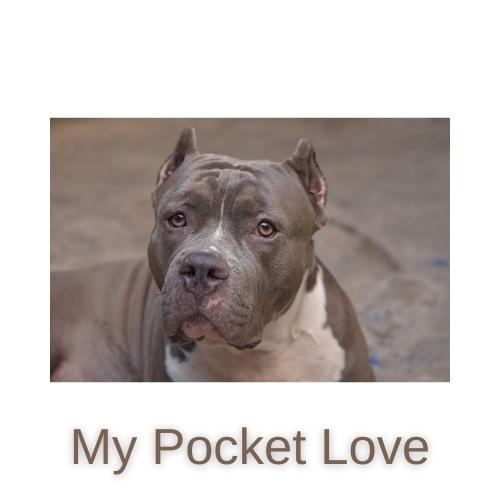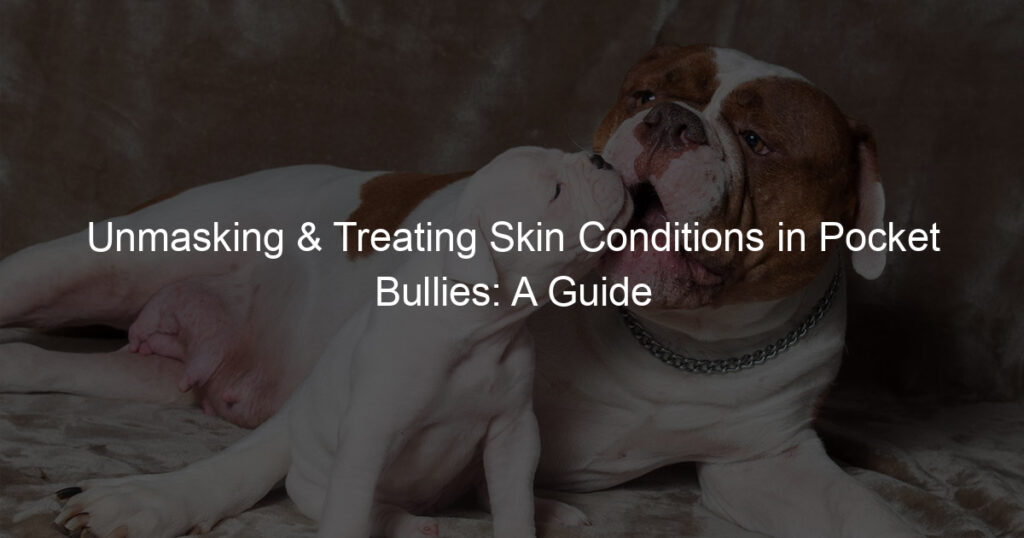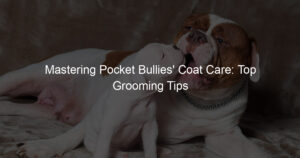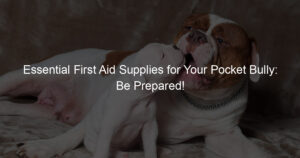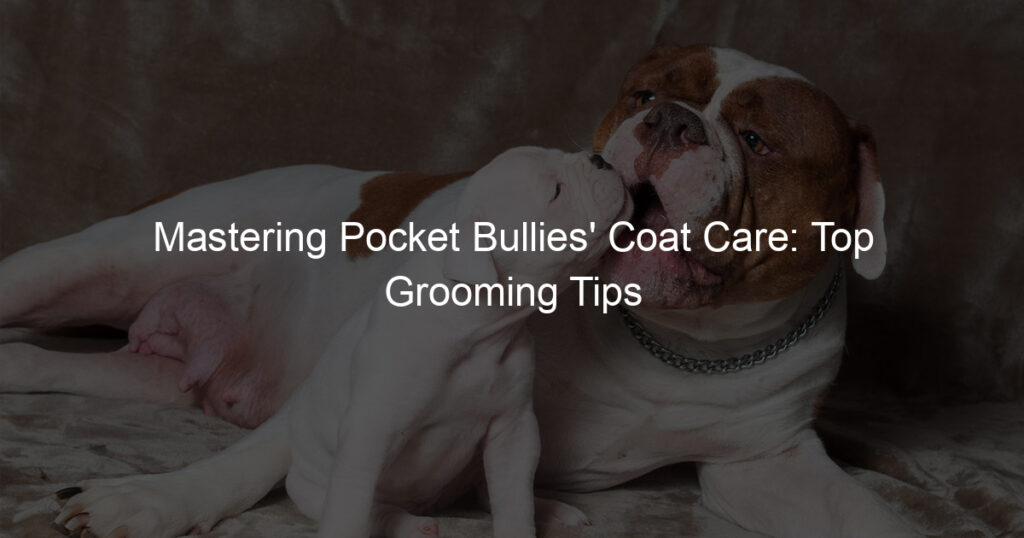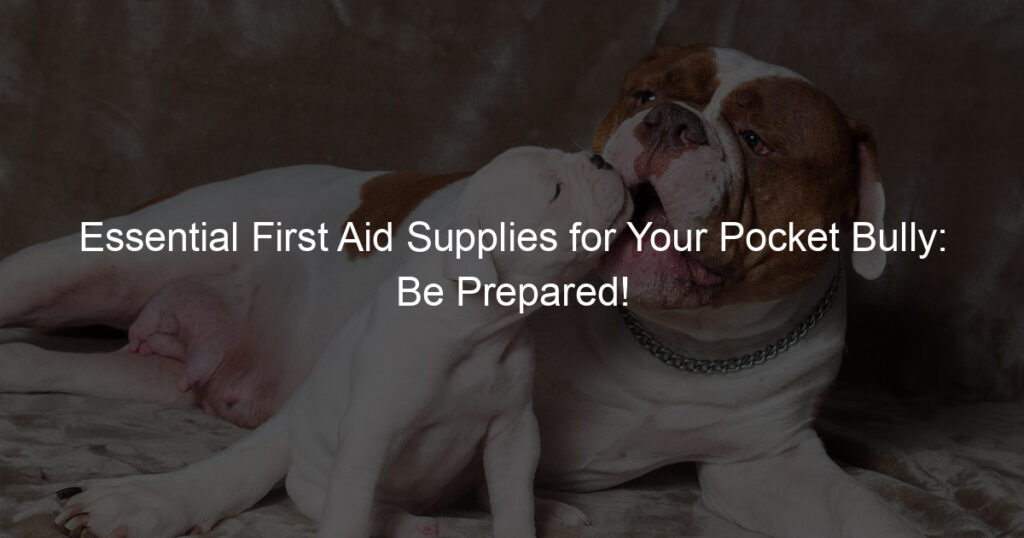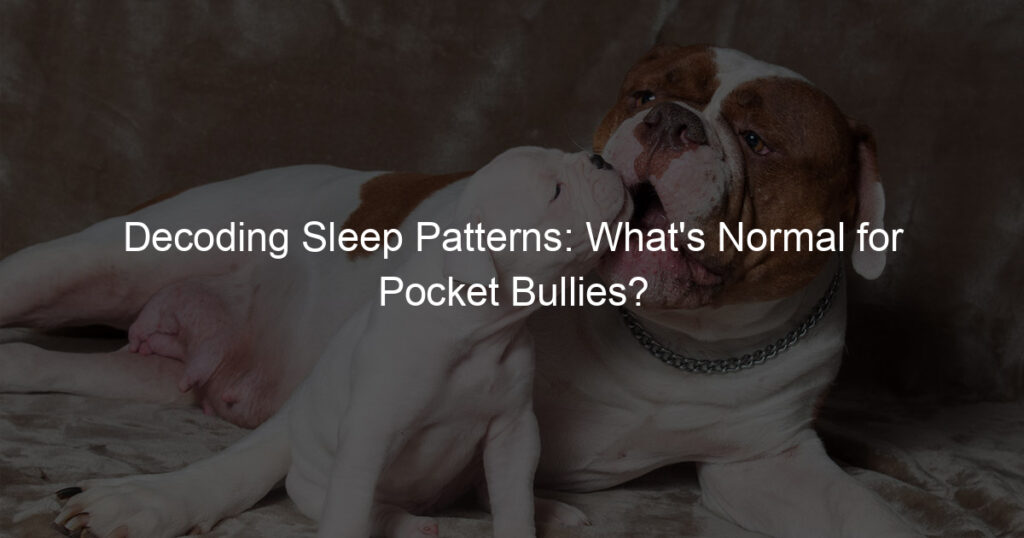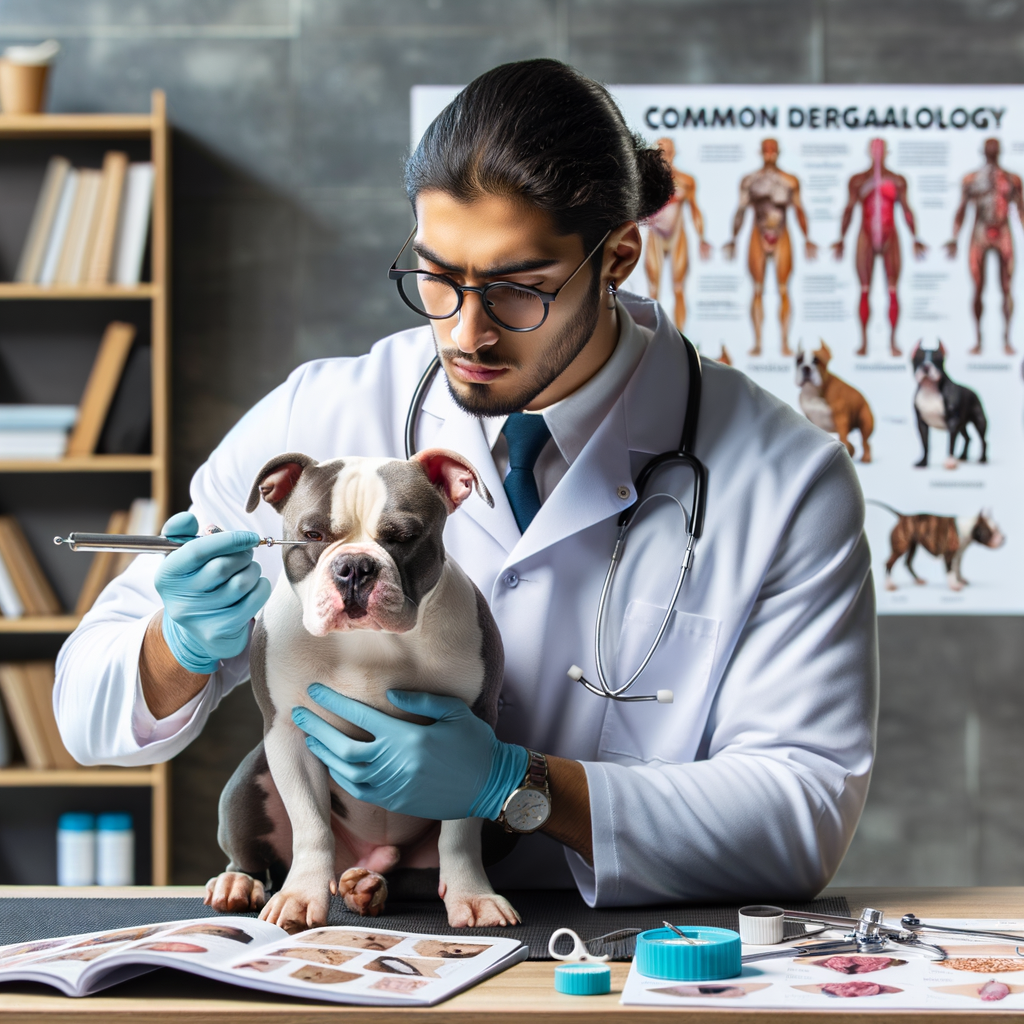
Introduction to Pocket Bullies Skin Conditions
As a Pocket Bullies owner or enthusiast, you understand that these adorable dogs are not just pets but members of your family. Therefore, their health and well-being are of utmost importance. One aspect of their health that often gets overlooked is skin health. This article will shed light on the importance of skin health in Pocket Bullies and discuss some common skin problems they may face.
- Understanding the importance of skin health in Pocket Bullies
- Common skin problems in Pocket Bullies
The skin is the largest organ in a dog’s body and serves as the first line of defense against harmful bacteria and viruses. It also helps regulate body temperature and allows your Pocket Bullies to have a sense of touch. Healthy skin is essential for your dog’s overall well-being. Skin problems can not only cause discomfort and pain but also lead to more serious health issues if not addressed promptly.
Pocket Bullies, like other breeds, can suffer from a variety of skin conditions. Some of the most common ones include allergies, bacterial infections, and parasitic infestations. Allergies can be caused by a variety of factors, including food, environmental factors like pollen, or even certain materials like plastic. Bacterial infections often occur when your dog’s skin is damaged or irritated, providing an entry point for bacteria. Parasitic infestations, such as fleas or mites, can also cause severe skin problems.
In the following sections, we will delve deeper into how to identify these skin conditions, treatment options, and ways to maintain your Pocket Bullies’ skin health. Remember, a healthy dog is a happy dog, and skin health plays a crucial role in their overall happiness and well-being.
Identifying Skin Conditions in Pocket Bullies
Identifying skin conditions in Pocket Bullies is crucial for their health and well-being. Early detection can make a significant difference in the treatment and management of these conditions. Let’s explore the process of visual inspection and what to look for.
Visual Inspection
Visual inspection is the first step in identifying skin conditions in Pocket Bullies. It involves carefully examining your pet’s skin and coat for any signs of disease or abnormalities. Let’s delve into the signs of skin disease and some common skin issues in Pocket Bullies.
- Signs of skin disease in Pocket Bullies
- Examples of common skin issues in Pocket Bullies
There are several signs that your Pocket Bully might be suffering from a skin condition. These include redness, inflammation, itching, hair loss, and the presence of bumps or lumps on the skin. If your pet is excessively scratching, licking, or biting its skin, it could be a sign of discomfort and a potential skin issue.
Pocket Bullies can be prone to a variety of skin conditions. Some of the most common include allergies, dermatitis, mange, and skin infections. Allergies can be caused by a variety of factors, including food, environmental triggers like pollen, or even fleas. Dermatitis is an inflammation of the skin that can result in a rash, itching, and hair loss. Mange is a skin disease caused by mites, and skin infections can occur when bacteria or yeast overgrow on the skin’s surface.
Remember, these signs and conditions are not exhaustive, and a professional diagnosis is always recommended for accurate identification and treatment of skin conditions. If you notice any abnormalities or changes in your Pocket Bully’s skin or coat, it’s best to consult with a veterinarian immediately.
Professional Diagnosis
When it comes to identifying skin conditions in Pocket Bullies, a professional diagnosis is crucial. This involves the expertise of a veterinary dermatologist and the use of specific diagnostic tests. Let’s delve into these aspects.
- The Role of Veterinary Dermatology in Diagnosing Skin Conditions
- Common Diagnostic Tests for Skin Conditions in Pocket Bullies
- Skin scraping: This test involves gently scraping the skin to collect cells for examination under a microscope. It can help identify parasites or infections that might be causing the skin condition.
- Culture tests: These tests are used to identify bacterial or fungal infections. A sample is taken from the affected area and cultured in a lab to identify the type of bacteria or fungus.
- Allergy testing: If the vet suspects that your Pocket Bully’s skin condition is due to an allergy, they might perform an allergy test. This could involve a blood test or a skin test to identify the allergen.
- Biopsy: In some cases, a small sample of skin may be removed and examined under a microscope. This can help identify more serious conditions like skin cancer.
Veterinary dermatology is a specialized field of veterinary medicine that focuses on the diagnosis and treatment of skin diseases in animals. These experts have a deep understanding of the skin conditions that can affect Pocket Bullies. They use their knowledge and experience to accurately diagnose skin conditions, which is the first step towards effective treatment.
These professionals are trained to identify the subtle signs of skin issues that might be missed by a general vet. They can differentiate between various skin conditions, which can look similar but require different treatments. By making an accurate diagnosis, they ensure that your Pocket Bully gets the right treatment promptly.
There are several diagnostic tests that veterinary dermatologists use to identify skin conditions in Pocket Bullies. Some of these include:
These tests provide valuable information that helps the vet make an accurate diagnosis. Once the cause of the skin condition is identified, a suitable treatment plan can be put in place.
Treating Skin Conditions in Pocket Bullies
When it comes to the health of your Pocket Bully, skin conditions can be a common concern. But don’t worry, there are various medical treatments available that can help your furry friend feel better. Let’s explore some of these treatments.
Medical Treatments
Medical treatments for skin conditions in Pocket Bullies can range from topical creams to oral medications. It’s important to understand what each treatment entails and the potential side effects they may have.
- Common medications for Pocket Bullies skin treatment
- Antibiotics: These are used to treat bacterial infections that can cause skin conditions.
- Antifungal medications: These are used to treat fungal infections.
- Antihistamines: These are used to treat allergic reactions that can lead to skin conditions.
- Steroids: These are used to reduce inflammation and itching.
- Understanding the potential side effects of skin treatments
- Loss of appetite
- Vomiting or diarrhea
- Changes in behavior such as increased aggression or lethargy
- Changes in skin color or texture
There are several medications commonly used to treat skin conditions in Pocket Bullies. These include:
While these medications can be effective, they may also have potential side effects. It’s important to monitor your Pocket Bully closely and consult with your vet if you notice any changes in behavior or physical appearance. Some common side effects can include:
Remember, every Pocket Bully is unique and may react differently to various treatments. It’s crucial to work closely with your vet to find the best treatment plan for your Pocket Bully’s specific needs.
Natural Remedies
When it comes to treating skin conditions in Pocket Bullies, natural remedies can be a viable option. These treatments, derived from nature, can offer a gentle and effective approach to skin care. However, like any other treatment, they come with their own set of benefits and drawbacks.
-
Benefits and Drawbacks of Natural Skin Treatments
Natural skin treatments can be beneficial because they are often less harsh than medical treatments. They can soothe the skin and help heal conditions without causing further irritation. For instance, aloe vera is known for its healing properties and can be applied directly to the affected areas.
However, there are also drawbacks to consider. Natural remedies may not be as fast-acting as medical treatments. They may also not be effective for severe skin conditions. Furthermore, some dogs may have allergic reactions to certain natural ingredients. It’s always important to test a small amount of the remedy on a small area of your dog’s skin before fully applying it.
-
Examples of Effective Natural Remedies for Skin Conditions
There are several natural remedies that can be effective in treating skin conditions in Pocket Bullies. Here are a few examples:
Remedy Benefits Aloe Vera Helps soothe and heal irritated skin Coconut Oil Moisturizes skin and has anti-inflammatory properties Oatmeal Bath Relieves itching and inflammation Remember, it’s crucial to monitor your dog’s reaction to these remedies. If you notice any adverse reactions, stop the treatment immediately and consult with a vet.
Pocket Bullies Skin Care
When it comes to the health and well-being of your Pocket Bully, skin care is of utmost importance. A well-groomed and healthy skin not only enhances the appearance of your pet but also prevents various skin conditions.
Daily Care
Regular grooming and the use of appropriate skin care products play a significant role in maintaining the skin health of your Pocket Bully. Let’s delve into these aspects in detail.
- Importance of Regular Grooming for Maintaining Skin Health
- Recommended Products for Pocket Bullies Skin Care
- Shampoo: Use a hypoallergenic shampoo specifically designed for dogs. It should be gentle on the skin and free from harsh chemicals.
- Conditioner: A good conditioner helps to keep your dog’s skin moisturized and its coat shiny. Look for one that is enriched with natural oils.
- Brush: A soft-bristle brush is ideal for Pocket Bullies. It helps to remove loose hair and stimulates the skin.
- Skin Care Wipes: These are handy for quick clean-ups and can help to keep your dog’s skin clean and fresh.
Regular grooming is not just about keeping your Pocket Bully looking its best. It also plays a crucial role in maintaining its skin health. Grooming helps to remove dirt, dander, and loose hair that can cause skin irritation. It also stimulates the natural oils in your dog’s skin, which keep it moisturized and protected. Regular grooming allows you to check for any signs of skin conditions like redness, bumps, or parasites.
Choosing the right products for your Pocket Bully’s skin care is essential. Here are some recommendations:
Remember, every Pocket Bully is unique and what works for one may not work for another. Always consult with your vet before introducing new products into your dog’s skin care routine.
Diet and Skin Health
One of the most overlooked aspects of maintaining skin health in Pocket Bullies is their diet. What your dog eats can significantly impact their skin condition. Let’s delve into how diet can affect skin conditions and what diet is recommended for healthy skin in Pocket Bullies.
- How diet can affect skin conditions in Pocket Bullies
- Recommended diet for healthy skin in Pocket Bullies
The food that your Pocket Bully consumes plays a vital role in their overall health, including their skin. A diet lacking in essential nutrients can lead to various skin conditions. For instance, a deficiency in Omega-3 fatty acids can result in dry, flaky skin. Similarly, a lack of Vitamin E can cause skin irritation and inflammation.
Moreover, some dogs may have food allergies that can exacerbate skin conditions. Common allergens include wheat, dairy, and certain proteins. If your Pocket Bully has a food allergy, they may experience symptoms like itching, redness, and skin rashes.
To ensure your Pocket Bully has healthy skin, it’s crucial to provide them with a balanced diet. This should include high-quality proteins, carbohydrates, and fats. Here are some key components of a skin-friendly diet:
| Nutrient | Benefits |
|---|---|
| Omega-3 Fatty Acids | Helps keep your dog’s skin hydrated and prevents dryness and flaking. |
| Vitamin E | Acts as an antioxidant, reducing inflammation and promoting skin health. |
| Protein | Essential for cell growth and repair, including skin cells. |
Remember, each dog is unique, and what works for one may not work for another. It’s always best to consult with a veterinarian before making any significant changes to your Pocket Bully’s diet.
Case Studies: Treating Skin Conditions in Pocket Bullies
Let’s take a closer look at some real-life examples of how skin conditions in Pocket Bullies were successfully treated. These case studies will provide a deeper understanding of the challenges and solutions associated with managing skin health in these adorable dogs.
-
Case Study 1: Successful Treatment of a Common Skin Disease
Meet Bella, a charming Pocket Bully who was suffering from a common skin condition known as Dermatitis. This condition caused Bella to constantly scratch and bite her skin, leading to sores and hair loss.
Her owner tried various treatments, but none seemed to work. Finally, they consulted a vet who specialized in skin conditions. The vet recommended a combination of medicated baths and a specific diet to boost Bella’s immune system. Within a few weeks, Bella’s skin started to improve. After a couple of months, her skin was completely healed, and her fur was growing back.
This case study highlights the importance of consulting a specialist and following a comprehensive treatment plan.
-
Case Study 2: Overcoming a Challenging Skin Condition with a Holistic Approach
Next, we have Max, a Pocket Bully who had a more severe skin condition. Max was suffering from Canine Atopic Dermatitis, a chronic condition that caused him to develop rashes and infections.
Max’s owner tried several treatments, but the condition kept recurring. Finally, they decided to take a holistic approach. They consulted a vet who recommended a combination of medications, diet changes, and lifestyle modifications. This included reducing exposure to allergens, providing a balanced diet rich in omega-3 fatty acids, and regular grooming to keep Max’s skin clean.
Slowly but surely, Max’s condition started to improve. Today, Max is a happy and healthy dog, thanks to the holistic approach to his skin care.
This case study emphasizes the effectiveness of a holistic approach in treating challenging skin conditions.
In conclusion, these case studies demonstrate that with the right approach, even the most challenging skin conditions can be managed effectively. Remember, every Pocket Bully is unique, and what works for one may not work for another. Therefore, it’s crucial to consult a vet and follow a personalized treatment plan.
Conclusion: Ensuring Skin Health in Pocket Bullies
As we wrap up this comprehensive guide on skin health in Pocket Bullies, it’s important to remember that maintaining your pet’s skin health is a critical aspect of their overall well-being. Let’s summarize the key takeaways and reflect on the importance of understanding and treating skin conditions.
- Key takeaways for maintaining skin health in Pocket Bullies
Firstly, regular grooming is essential. This includes bathing your Pocket Bully with a gentle, hypoallergenic shampoo and brushing their coat to remove dead skin cells and stimulate natural oil production. Secondly, a balanced diet rich in essential fatty acids can help to maintain healthy skin and coat. Thirdly, regular vet check-ups are crucial to detect any potential skin issues early and start treatment promptly. Lastly, remember that skin conditions can be a sign of underlying health issues, so never ignore persistent skin problems.
- Final thoughts on the importance of understanding and treating skin conditions
Understanding and treating skin conditions in Pocket Bullies is not just about making them look good. It’s about ensuring their comfort and overall health. Skin conditions can cause significant discomfort and can lead to more serious health issues if left untreated. By recognizing the signs of skin conditions early and seeking appropriate treatment, you can help your Pocket Bully lead a happier, healthier life.
In conclusion, the health of your Pocket Bully’s skin is a reflection of their overall health. It’s our responsibility as pet owners to ensure that our pets are not only happy and well-fed but also healthy from the inside out. Remember, a healthy Pocket Bully is a happy Pocket Bully!
| Key Takeaways | Actions |
|---|---|
| Regular grooming | Bathe and brush your Pocket Bully regularly |
| Balanced diet | Provide a diet rich in essential fatty acids |
| Regular vet check-ups | Schedule regular vet visits for early detection of skin issues |
| Don’t ignore skin problems | Seek immediate vet care for persistent skin problems |
